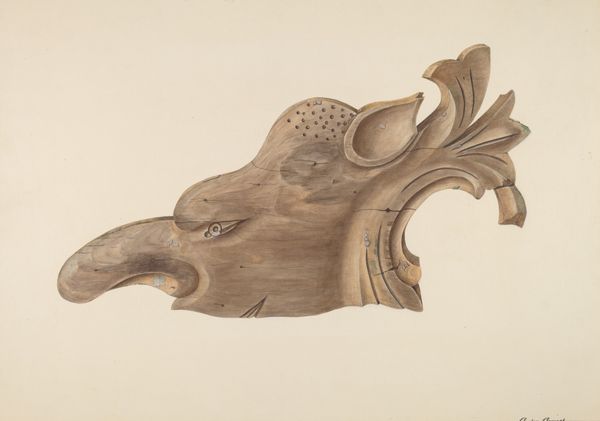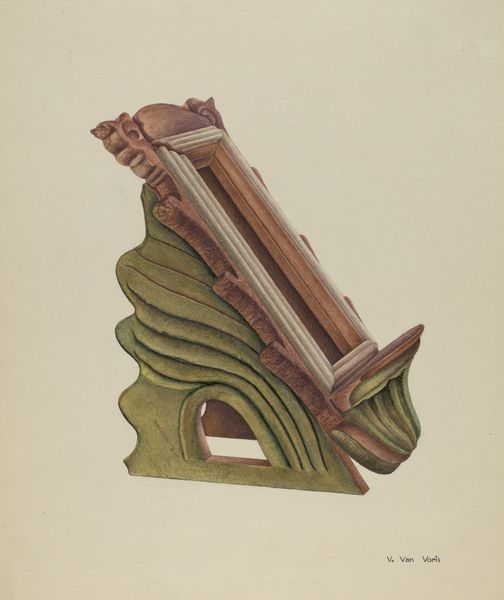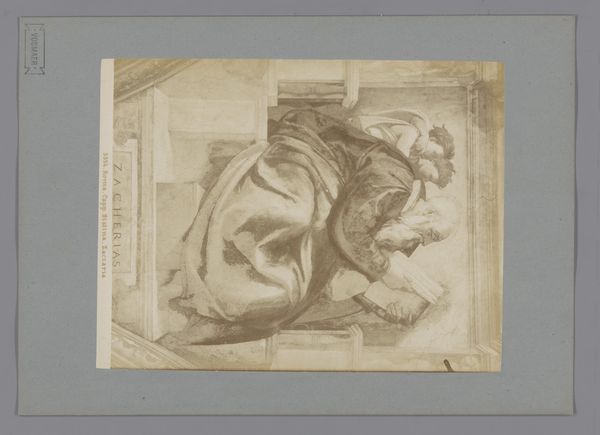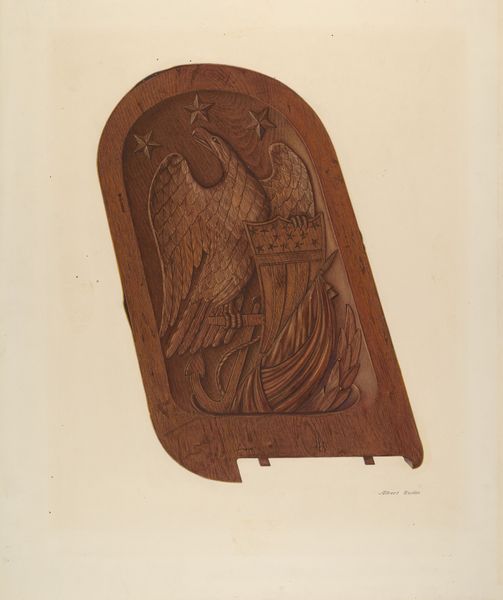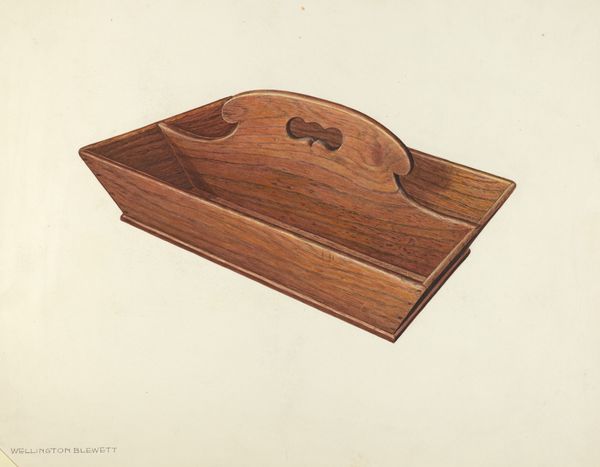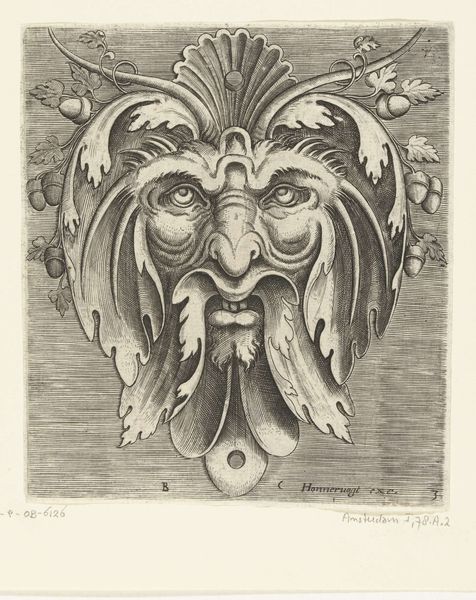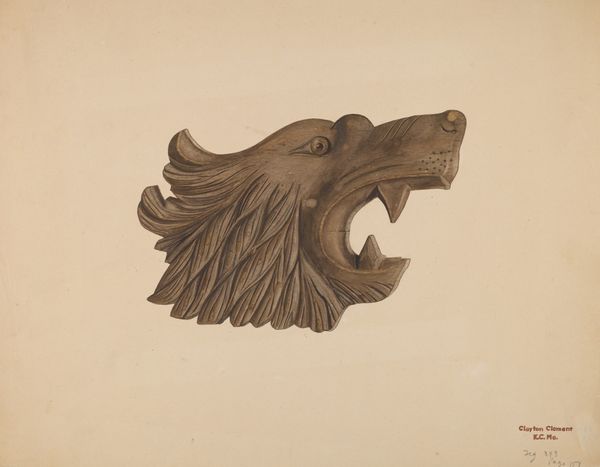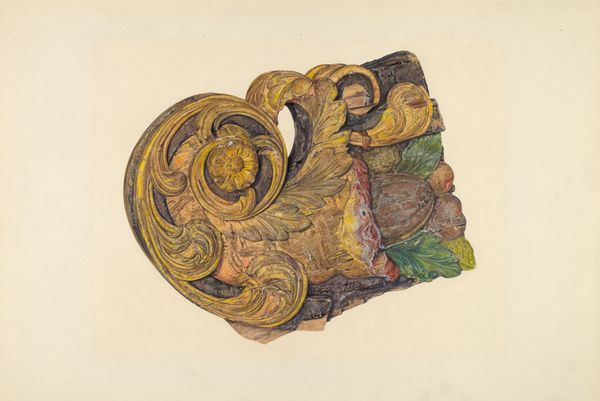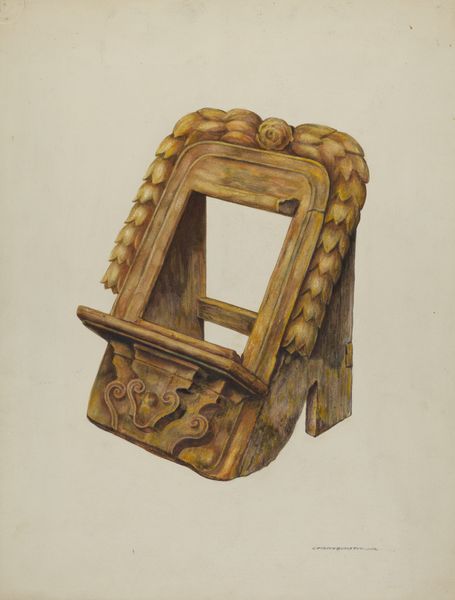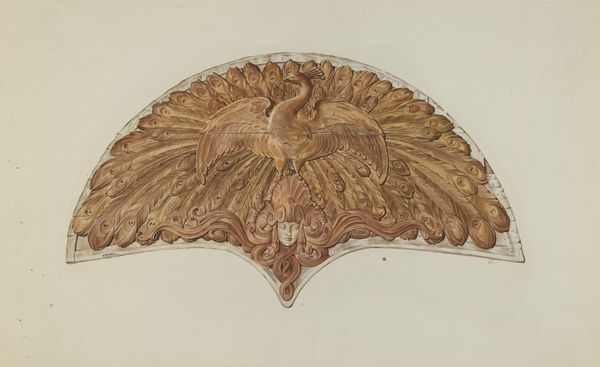
carving, sculpture, wood
#
carving
#
figuration
#
sculpture
#
wood
Dimensions: overall: 30.5 x 40.6 cm (12 x 16 in.) Original IAD Object: 16" (approx.)
Copyright: National Gallery of Art: CC0 1.0
Curator: Looking at Henry Murphy's "Mantle Carving (Dog's Head)" from around 1939, I'm immediately struck by its domesticity. There's an unmistakable tenderness evoked by the subject—it suggests loyalty and protection. Editor: The warm tones and smooth finish definitely soften the carving, giving it a really accessible quality. Wood, after all, is an incredibly familiar and comforting material. It's interesting how the artist took such care to carve this one material into a dog's shape to communicate that care, love and labor Curator: Absolutely. Wood as a medium carries its own set of cultural signifiers. Consider that dogs, historically, are symbolically linked with service and submission, but that reading needs nuance. Are we to interpret it with consideration to indigenous knowledge systems where animals embody knowledge and carry a very specific ancestral representation, as guides in both spiritual and material worlds? Editor: It is about labor and its potential end product as care: The precise detailing of the dog's fur, for example—that comes from careful, dedicated labor with wood—shows dedication, love, and perhaps the carving may reflect the value given to animals to specific groups in society at a specific historical moment. Curator: Indeed, and the question of accessibility is key here. In what ways does Murphy utilize figuration as a means to challenge certain colonial conventions related to artmaking from that moment in time, and can its location inform further analysis in relation to Indigenous cultural markers of representation? It forces one to reconsider established canon frameworks in understanding contemporary sculpture made of wood. Editor: The social context of wood as both raw material and crafted product also fascinates me. Where did the material come from, and what kind of work did its procurement involve? You know, tracing the origins of this work pushes us beyond aesthetic contemplation, to its means of production and how labor intersects cultural expressions. Curator: Those origins deeply impact the work's reception too, shaping our understanding in relation to societal issues present in both the artwork’s context, as well as in present-day. Editor: Reflecting on the artistic and practical processes certainly adds to the enjoyment of the carving’s accessibility while emphasizing what that labor reflects about larger world issues. Curator: Right—a crucial addition of interdisciplinary study enriches the historical appreciation of an art object.
Comments
No comments
Be the first to comment and join the conversation on the ultimate creative platform.
